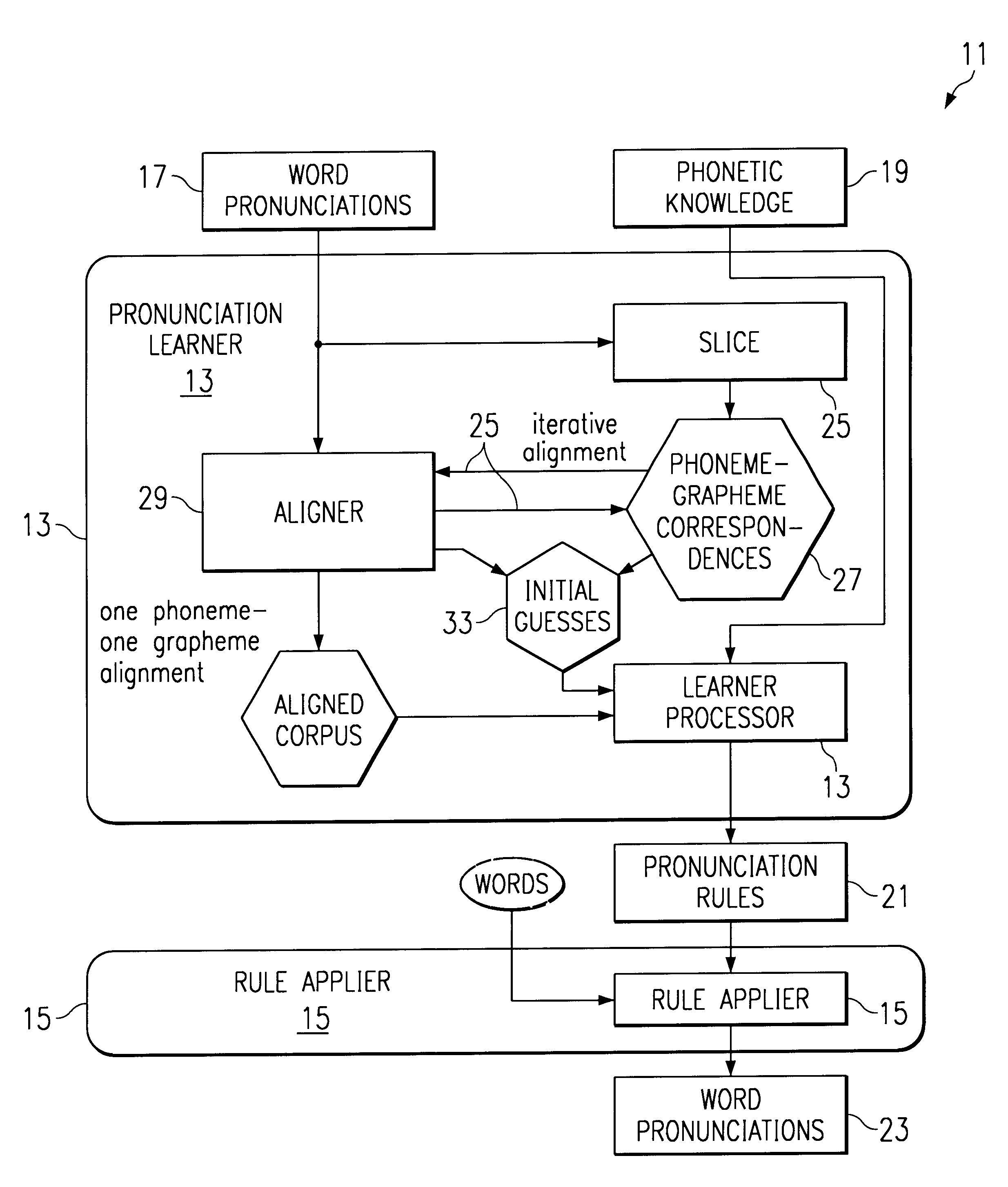Rule-based learning of word pronunciations from training corpora
a word pronunciation and learning technology, applied in the field of rule-based learning of word pronunciation from training, can solve the problems of repeated effort, low speech quality of speakers, and large amount of memory, and achieve the effect of improving the accuracy of speech recognition
- Summary
- Abstract
- Description
- Claims
- Application Information
AI Technical Summary
Benefits of technology
Problems solved by technology
Method used
Image
Examples
Embodiment Construction
The purpose of this application is to teach how to build a system that is able to extract pronunciation information from a set of word pronunciations, and is able to generate pronunciations for words not in the list. Other desired properties of the system are that it should be language independent and require minimal information about the language in question. Also, the pronunciation generation should be fast and use only a small amount of space, while the pronunciation information should also be captured compactly.
An important factor we need to consider is that when we generate pronunciations used for speech recognition, we want to generate all acceptable (and plausible) pronunciations, so that the system will be robust. (We will refer to systems that generate all plausible pronunciations for words as text-to-pronunciation systems in the rest of this document.) Since one needs all plausible pronunciations, Applicants' system needs to be able to capture rules that can generate multi...
PUM
 Login to View More
Login to View More Abstract
Description
Claims
Application Information
 Login to View More
Login to View More - R&D
- Intellectual Property
- Life Sciences
- Materials
- Tech Scout
- Unparalleled Data Quality
- Higher Quality Content
- 60% Fewer Hallucinations
Browse by: Latest US Patents, China's latest patents, Technical Efficacy Thesaurus, Application Domain, Technology Topic, Popular Technical Reports.
© 2025 PatSnap. All rights reserved.Legal|Privacy policy|Modern Slavery Act Transparency Statement|Sitemap|About US| Contact US: help@patsnap.com



